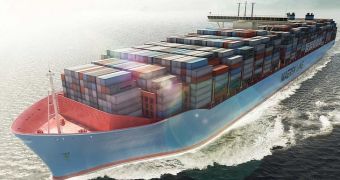So far, there does not seem to be any limit to what 3D printing technology can accomplish. The only limitations lie in build volume and the resolution (the layer thickness), which are constantly improving. Considering all this, it is not such a shock to learn that Maersk has begun to use 3D printers even offshore.
Maersk, headquartered in Copenhagen, is a shipping company which has been around for 110 years or so, during which time it has delivered goods all around the world.
Long voyages can strain supplies, though, and make it hard to procure repair parts in case something happens to the ship. And some of the goods may suffer damage as well, due to storms or whatever else.
3D printing technology is an easy way to produce spare parts, so Maersk has installed 3D printers aboard its ships and will no doubt keep doing so every time another docks at a harbor.
This puts Maersk ahead of even the US Navy, which has been testing 3D printing technology but hasn't made the final step in its acquisition and use. Probably because it's waiting until metal 3D printing is a bit more refined.
Maersk has over 500 container ships, which makes for a good few 3D printers that are set to be bought. Especially since it's not going to restrict the ships to a single printer per vessel. Most of them are too large for just one to make a difference.
Being able to create spare ship parts out of ABS thermoplastic, and eventually through powder-based metal laser sintering techniques, will make it so that minor damage doesn't force captains to make detours and stops at the nearest docks.
Instead, they will be able to hold their course and reach their destination as intended, in the allotted time or even less.
The ships won't even need a full team of engineers or specialist repairmen. Instead, an engineer can just sit at a desk in Copenhagen and e-mail an .STL file to a computer on board the ship when contacted for assistance. Within a few hours, the replacement part would be ready. Swapping the damaged one for the new is easy enough for the ship workers themselves.
Unfortunately, it will be a few years before sophisticated metal sintering printers become viable and affordable enough for Maersk to make its vision true. Until then, only thermoplastics patchworks will be possible. It will most assuredly happen though.

 14 DAY TRIAL //
14 DAY TRIAL // 